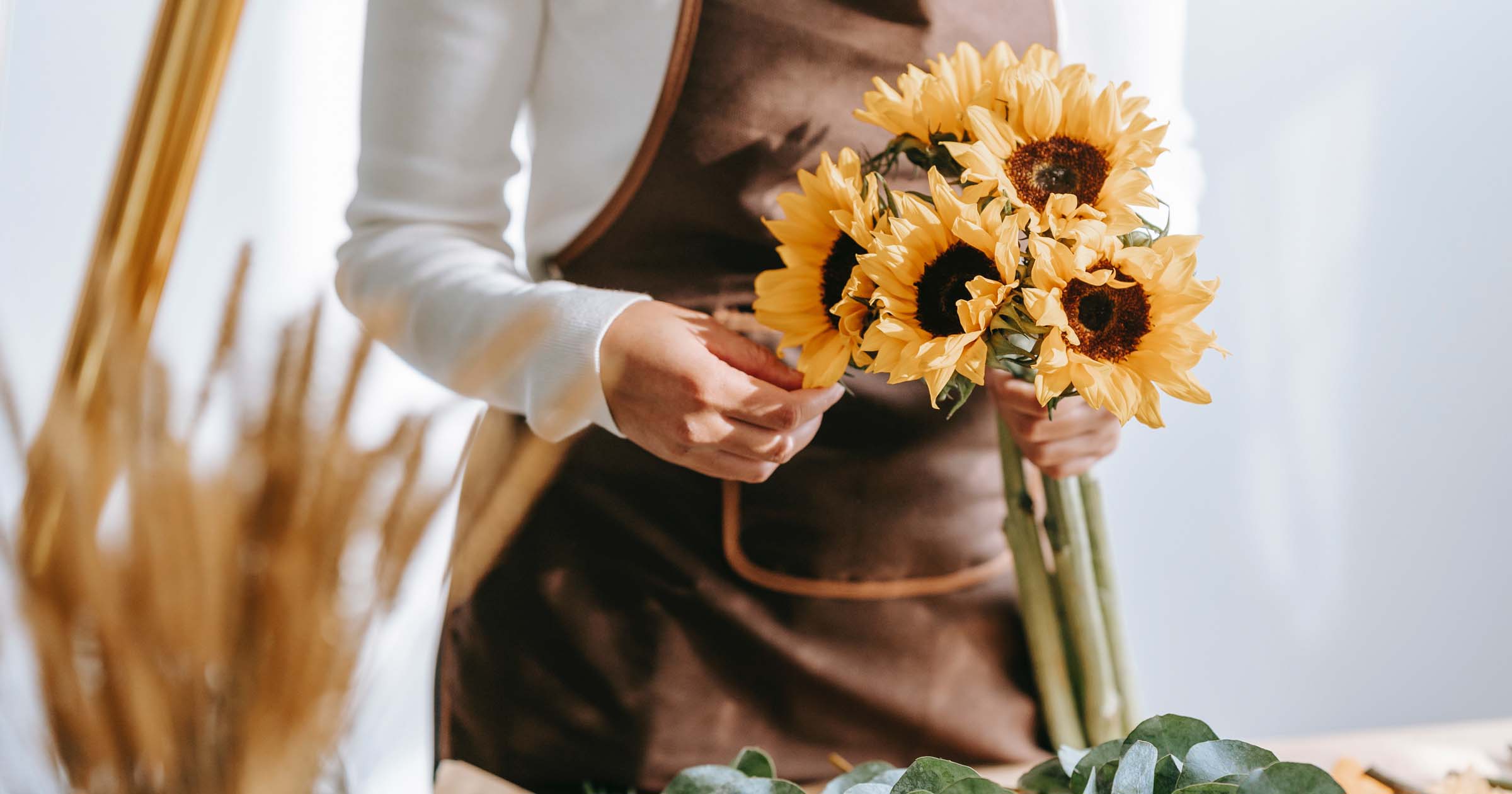Discover the Art of Floral Style: Tips From Specialist Florists
Floral layout is not just a visual undertaking; it is a nuanced art type based in principles such as equilibrium, percentage, and contrast. Specialist florists supply vital understandings into picking the ideal flowers customized to details celebrations, making certain that each plan resonates with its intended message.
Understanding Floral Design Principles
Frequently forgotten by amateur floral designers, recognizing the essential principles of flower design is necessary for producing visually enticing plans (florist lockhart). These principles work as the foundation upon which effective floral make-ups are constructed, making certain harmony and balance in each creation
The trick principles consist of equilibrium, proportion, comparison, rhythm, and unity. Equilibrium describes the distribution of visual weight within a plan, which can be balanced or asymmetrical. Proportion involves the partnership between the dimension of blossoms and the container, making certain that each aspect matches the others. Comparison, accomplished through differing colors, forms, and textures, adds interest and deepness to the layout.

Rhythm guides the customer's eye via the arrangement, usually completed by repeating shapes or shades. Unity ensures that all elements of the design work together cohesively, producing a feeling of completeness. By understanding these principles, flower designers can elevate their work, transforming simple bouquets right into stunning aesthetic statements.
Eventually, a solid understanding of these flower design concepts not only enhances creativity but also promotes a deeper appreciation for the artistry associated with flower arrangements (florist lockhart). Via practice and application, beginner flower shops can establish their skills and produce unforgettable layouts
Picking the Right Flowers
Picking the ideal flowers is a crucial step in the floral design procedure, directly influencing the general visual and performance of the arrangement. To begin, think about the occasion; different events ask for unique flower types. Romantic settings might profit from roses, while cheerful events may suit sunflowers or gerbera sissies.
Next, assess the color palette. Unified colors can evoke particular feelings and improve the visual charm. Use a color wheel to identify corresponding or comparable color systems that can develop a natural appearance. Furthermore, consider the period; seasonal blossoms not just make sure freshness but additionally commonly come at a lower expense, making them a sensible selection.
Another important aspect is the desired long life of the plan. By attentively picking flowers, you can develop arrangements that resonate with their desired purpose and audience.
Methods for Arrangement

An additional effective method is the "line this hyperlink design," which emphasizes the natural lines and forms of the blossoms. By utilizing long-stemmed flowers, developers can produce a feeling of movement and flow in the plan, attracting the eye along the lines developed by the stems. Additionally, integrating varying heights in the setup includes depth and rate of interest, permitting the visitor to discover the piece from different angles.
This approach can stimulate particular emotions and established the mood of the arrangement. Do not fail to remember the relevance of unfavorable area; leaving gaps within the plan allows for taking a breath space, boosting the general aesthetic and stopping congestion.

Seasonal Floral Inspirations
Integrating seasonal components right into floral layouts can greatly enhance their charm and importance. By aligning floral plans with the transforming seasons, flower designers can stimulate specific state of minds, motifs, and colors that resonate with customers and the atmosphere. Each period supplies an unique scheme of blooms and foliage that enables imagination and inspiration.
Fall's rich tones can be caught through dahlias, chrysanthemums, and decorative lawns, producing warm, inviting plans that show the harvest. Winter months provides a peaceful visual with evergreens, amaryllis, and seasonal berries, excellent for stimulating a sense of tranquility and festivity.
Caring for Your Setups
Looking after floral setups is vital to maintain their elegance and longevity. Correct treatment guarantees that your blossoms stay vibrant and fresh, boosting the aesthetic allure of your area. Start by putting your setup in a great location, far from direct sunshine and drafts, as extreme temperature levels can create wilting and staining.
Routinely examine the water degree in the flower click holder, ensuring it suffices to cover the stems adequately. Replace the water every couple of days to stop microbial growth, which can shorten the life-span of your arrangement. When altering the water, trim the stems at an angle to promote much better water absorption. Remove any kind of bent or browning leaves and flowers without delay to stop degeneration from spreading.
Furthermore, consider the kind of blossoms in your setup; some might require details treatment. Stay clear of placing your plans near ripening next fruit, as ethylene gas can increase wilting.

Conclusion
In verdict, grasping the art of flower style involves a thorough understanding of fundamental principles, cautious selection of blossoms, and the application of reliable arrangement strategies. Seasonal motivations further improve imagination, while proper treatment ensures that floral displays preserve their elegance and durability. By incorporating these elements, people can develop impactful setups that share emotion and offer their desired function, eventually improving the experience of both the developer and the recipient.